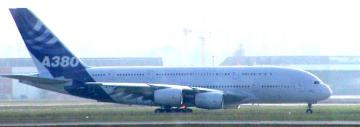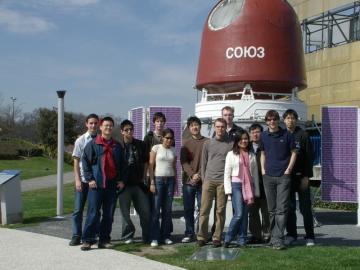Organised by Michael Ford, Corpus Christi College and Semjon Terehhov, Mansfield College
Each year, the Department of Materials at the University of Oxford runs an industrial tour in the Easter vacation, organised fully by the undergraduate student body but benefiting post-graduates as well. This year we selected Toulouse as our destination, and with the aid of generous sponsorship from the department, IOM3 and the Worshipful Company of Armourers and Brasiers, we travelled there over Easter.

The tour centred around a full-day visit to Airbus Industrie, the aerospace company currently developing the A380. This included presentations about the business side of Airbus as well as the technological side. The students were also able to take part in an interactive workshop on environmental issues involved in aerospace before being able to view the A380. In addition to visiting Airbus, trips were also organised to see two CNRS research laboratories: LAAS and CEMES. At LAAS, we learned about their research areas, including micro- and nanotechnologies and photonics. We also were able to visit their clean-room facilities, and the different high-tech equipment's uses were explained by our expert guide. At CEMES, very interesting presentations were given on research into liquid crystals and their commercial applications, materials modelling and various aspects of modern microscopy. Luckily, CEMES was one of the pioneers in electron microscopy, and we were allowed to visit their original microscopy facilities including an impressive spherical high voltage generator.

Of course, the students also enjoyed free time in and around Toulouse. We visited the Cite de l'Espace, a space museum with real-sized replicas of shuttles and space stations. French food seemed very popular indeed, and part of the sponsorship money was used to organise a delicious tour dinner on Toulouse's main square. To allow the students to really soak up French culture, we travelled to Bordeaux for a day of sight-seeing, and spent the evening in a little village called St. Emilion, tasting the locally-produced wine and visiting the caves or cellars where the barrels of wine are stored.
It seems the tour was a definite success, with the students not only able to experience the differences between French and British culture in day-to-day life, but also in industry and scientific research.
By Michael Ford and Semjon Terehhov